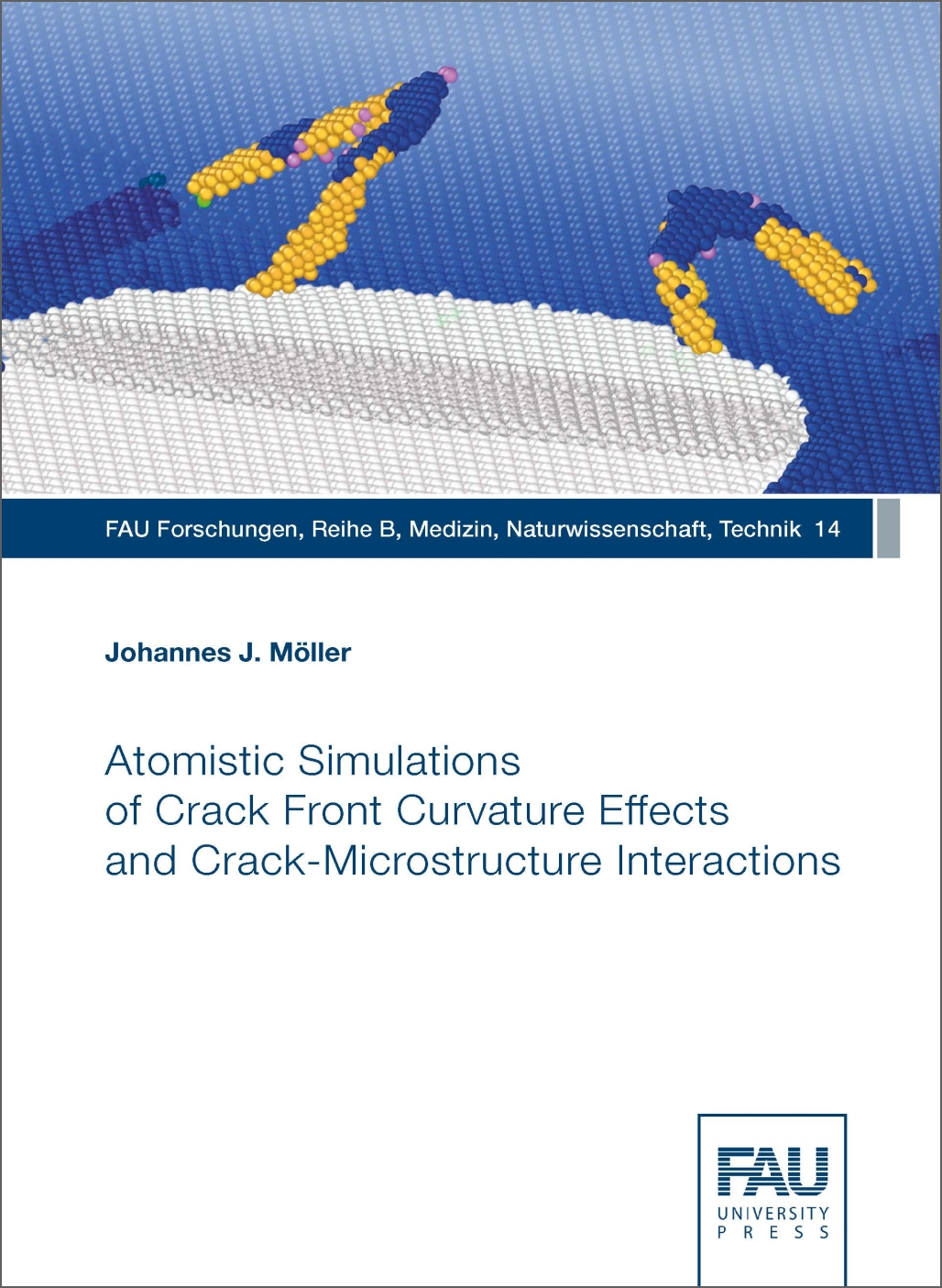Description
The resistance against crack propagation is undoubtedly one of the most important properties of metallic materials. Particularly in the early stage of their existence, the growth of cracks is influenced by interactions with the surrounding microstructure, e.g., grain boundaries and dislocations. In this context, atomistic simulations play an important role in providing valuable information about fundamental crack tip processes, which can be used for the development of larger-scale models to predict crack propagation in realistic microstructures.
The present thesis contributes to this development by systematically determining the influences of crack front curvature and grain boundary (GB) structure on the competition between brittle fracture and crack tip plasticity in body-centered cubic (bcc) metals. For this purpose, multi-million atom molecular statics and dynamics simulations of perfectly straight and penny-shaped cracks were performed in defect-free single crystals and for the first time at GBs. Crack-dislocation interactions were exemplarily investigated for selected crack and slip systems.
At curved crack fronts, many slip planes intersect parts of the crack front and the tendency for crack tip plasticity is consequently higher than for infinitely long and straight crack fronts. At GBs, locally varying bonding situations lead to the dependence of the fracture resistance on the crack tip position and crack propagation direction. Crack-dislocation interactions are dominated by dislocation cross slip and subsequent glide along the crack front leading to local crack tip blunting.


Reviews
There are no reviews yet.